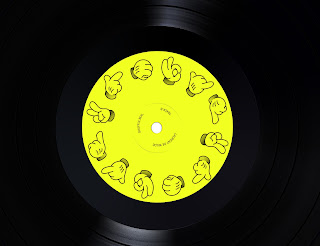I definitely believe that my biggest strength within this module was my research. I learnt so much new information that really impacted my design work, such as the exploration of Reid Miles as well as contemporary designers like Jay Vaz and Hassan Rahim. Arguably, the inspiration from those modern day designers have been a bigger help in allowing me to modernise my own design style and feel a lot more confident as a contemporary designer. This extensive level of research that I conducted has also led me to realise that I am heavily biased towards conceptual design, although having now realised this, I am not surprised. Additionally, I feel that my confidence with image treatment has skyrocketed and I now know that I can produce something simple and it can still be good design. This module has helped me not only realise but also elevate my skills within Photoshop as I created gradient maps and GIFs. I am also proud in my ability to bring together multiple concepts seamlessly to create something new - exemplified by my Cab Calloway hand signal illustrations.
Despite this, my biggest weakness has definitely been time management and motivation. Having not been in a creative student community and having my friends around me, I have struggled to keep up my passion for creating work. This is something that I am really eager to improve on, as I know that if I do I can create so much more for myself and projects outside of uni. It has made me reflect and realise that I rely heavily on motivation and praise from others to get work done, whereas I should be more focused on motivating myself. Furthermore, whilst being at home I have not reached away from my laptop to make work - which I find shocking. Within other modules I have really enjoyed being hands on and physically making things, however, even though I have limited resources at home - it was definitely still a possibility.
Since this was the last module of the year, I certainly approached it with more confidence than the first few. I now know the order of business: get your research done quickly, generate ideas as fast as possible, use different processes etc. and I think this allowed me to generate some quality work at the start of the project while I was still really motivated. Also, I understand the utter importance of quality research. Having learnt from past mistakes - if your research is bad, your design will be. This idea has to be good. These are all things that I have learnt that unknowingly have made me approach a brief differently.
Having felt confined to my laptop whilst being at home, in the future I will definitely try to keep away from it in order to create outcomes. I think that digital design is good, however, having reflected on my own work it has made me realise the significance of creating something physical to generate work and the impact it has on designs. This could be anything such as creating sculpture, crumpling paper, modifying objects, or using models.I think that nothing beats taking something physical and photographing it or scanning it in numerous ways to generate designs.
The stage of designing that I find the hardest would have to be experimenting with initial ideas. Sometimes I feel like this makes me a ‘bad designer’ but I tend to get really anxious about whether the work that I produce will be good enough, and usually wonder if I am wasting my time on a ‘bad idea’. I know that to get over this I need to realise that bad ideas are there for a reason and help push the development of a project, however I still tend to pressurise myself to make all of my work my best work (and get frustrated when it’s not). In contrast, once I have a solid idea that I know is good, I tend to find running with it really easy. Once I like an idea I could generate designs forever as long as I don’t have to think about how to justify it anymore. This however, tends to make me search for approval often as I want someone to tell me which idea to choose. To combat this, I really need to learn how to trust myself and answer my own queries.
I know for sure that I need to improve on type. I really didn’t enjoy the type module and think this has left me with some unjustifiable disdain for type but I struggle so much s that for this module I didn't even try - and I really regret that. I understand that it is a skill that every designer should at least try and have a go at - so I am going to make it my personal mission to give it a go in my second year, if not before. Reviewing my own final outcome for this project I know that it could have been improved by a custom typeface, so this is a skill that I really want to be at least moderate at.
Finally, I really regret not being able to physically produce the final outcome for this module. I already know that I would have had so much fun producing a poster zine as well as a sticker sheet - as these are things I now know how to make thanks to previous modules. Despite this, being in lock down has really improved my mockup skills.































































